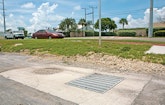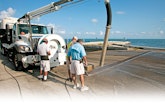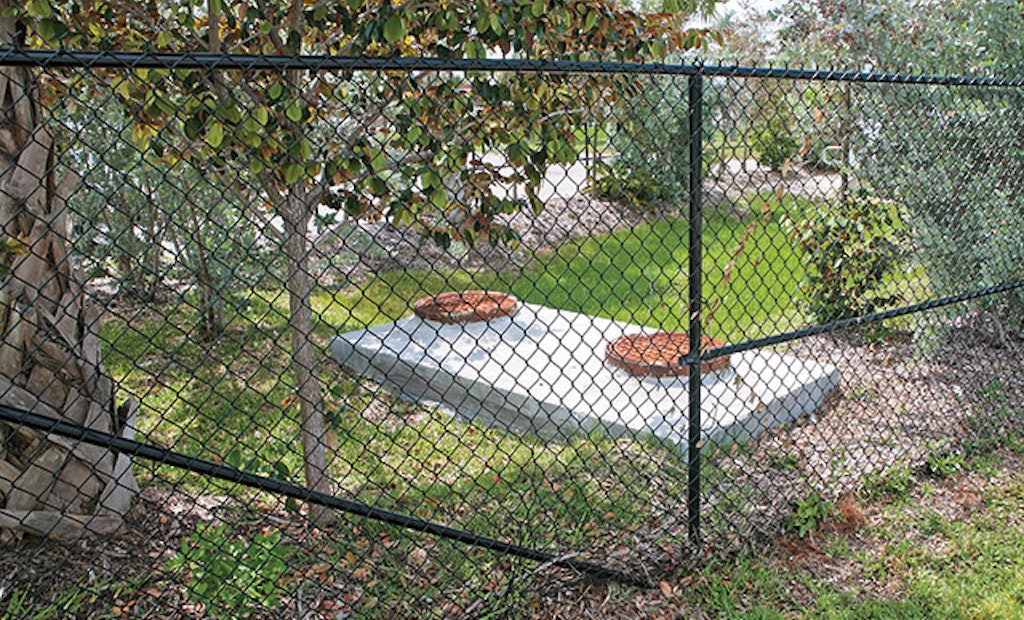Interested in Infrastructure?
Get Infrastructure articles, news and videos right in your inbox! Sign up now.
Infrastructure + Get AlertsThe City of Marathon, Fla., the midpoint of the Florida Keys, is some 75 miles from the mainland on U.S. Route 1, aka The Overseas Highway. The city was incorporated in 1999. Six years later, in response to federal and state mandates on water quality, they embarked on a major infrastructure upgrade. The multimillion-dollar project is now 95 percent complete, and scheduled for conclusion in late 2012.
"We got started early, right after Florida's legislature set the new standards," notes Zully Hemeyer, utilities manager for the Marathon City Utility Department (MCUD). "Back then, there was still a lot of grant money available. Marathon wanted to get the jump on what we knew would be a huge project."
Wastewater management and treatment in the Florida Keys requires atypical solutions to common problems (see sidebar). Other cities in the Keys weren't as quick off the starting line, and will have difficulty meeting the new standards by Florida's 2012 deadline.
"There were a lot of things we needed to do to meet those mandates, so we took it upon ourselves," says Carlos Solis, P.E., Public Works manager. "We issued bonds, we borrowed money, we applied for grants."
Waters around Marathon City are designated by the State of Florida as Class III based on their balanced wildlife population and recreational use, and are worthy of special protection because of their natural attributes. That prohibits the use of standard septic systems, and mandates no effluent be directly discharged into surrounding waters.
Further, monitoring programs have been in place for over 10 years, some by NOAA, to track the health of marine species, not the least of which is coral. The Keys are home to the largest living reef in North America, and its health is considered threatened.
Meeting those specs
The 1972 Clean Water Act empowered the EPA to set effluent standards. Many states followed that lead, creating their own environmental programs. In Florida, that was the Water Quality Improvement Initiative (WQII), instituted by the Florida Department of Environmental Protection (DEP).
MCUD, during their planning stage back in 2005, decided to break their system into seven service areas. The service areas were unique, with their own constraints and demands, and each required smart engineering solutions.
"One of the things that was mandated was that everyone gets off existing septic systems, and gets connected to a central sewer system," says Solis. "That was supposed to be done by 2012, and we're just about there."
Solis also shared an interesting story about the changeover. "We had this one residence, near a canal, off their septic and centrally connected for about eight or nine months. And they noticed that the dolphins were coming back into the canal for the first time in 30 years. Plus, they could actually see the bottom of the canal. Now that's healthy water."
Pull, don't push
When you don't have the topographic relief needed for a typical gravity-feed system, the only other option is pumping.
"If you want to use a gravity-feed system, even with pumping stations, those pipes get down 18 to 20 feet," Solis points out. "You just can't do that here. You'd be running into that porous caprock. Turns out the cost is actually less installing a vacuum system."
In the event of a minor break, instead of leaking sewage, the system "sucks air." Either that or gravel and/or saltwater, depending on the location of the break. In any event, monitors at the plant can detect a decrease in vacuum, or increased salinity, and alert operators to the break. The plants use new technology, all highly automated, and can react quickly.
"So it's more like you're 'pulling' than 'pushing' that sewage to the plants," Solis says. "You don't need much slope, so most of our pipes are horizontal, many only 4 feet deep, 6 at the deepest.
"We also discovered it would be cheaper, almost half the cost, to build treatment plants in each of our service areas, rather than have one large central plant. It's just too difficult and costly to transmit vacuum over long distances."
Candy canes
Throughout the neighborhoods, there are vacuum pits under the streets serving two to eight homes. These are repositories for waste that is gravity-fed through standard laterals. When the pit reaches capacity, a float opens a valve letting the vacuum draw out the waste.
At each residential service connection, there's a device known as a "candy cane" constructed from 6-inch schedule 40 PVC, about 3 feet tall, with two right-angle turns and a screened cap at the end.
"They're basically a riser for venting, so the vacuum can pull effluent. If you don't let the system pull in air, it won't work," Solis says. "Some people decorate them like real candy canes or other things. But it's good to have them as far from the house as possible, since the air-sucking noise can be loud. No problems with odor though. It's under negative pressure."
The screened end cap prevents fauna and debris from entering the system. But sometimes it can be clogged by dirt, webs or even bird nests. When that happens, the homeowner immediately knows.
"If you do have a clogged intake, weird things happen inside the house when the vacuum kicks in. The water in the toilet bowl gets drawn down. The traps in the sinks start gurgling. You just know something's wrong," Solis says.
Difficult constraints
Under the new water quality mandates, no effluent from treatment plants can be discharged into either the Gulf or Atlantic. The waters around Vaca Key and most other Keys have been designated Class III by the State of Florida. That classification recognizes the use of those waters for recreation, fishing and wildlife habitats.
"Everyone used to dump their effluent into the ocean, but we've learned much since those times," Solis says. "What we can't use for irrigation, parks, medians, school lawns, goes into an injection well. They're a couple hundred feet deep. So from there, Nature does the remaining filtration."
Four of the five wastewater plants in Marathon will be able to redistribute reclaimed water for irrigation. "We have one plant, in Area 4, that's piped for reclamation, and that water goes to a park, a golf course and the high school for irrigation," Hemeyer says.
MCUD services a base load of about 80,000 people, but during their peak tourist season (November through April) that number doubles. That means all systems must be designed for excess capacity, and while that excess capacity isn't needed for much of the year, it must nonetheless be maintained.
Hurricanes, of course, present the greatest challenge. If the Keys get a storm surge during high tide, a lot of real estate will be underwater. The treatment plants are designed to survive 175 mph winds, and all electrical equipment is located above the levels expected for a storm surge, which Hemeyer notes is required by Florida building code.
"If we have a major hurricane, you're gonna have three to four feet of water across the whole island ... that's a given," says Solis. "Obviously, we won't be operating until the water recedes. But as soon as it does, we can get back online using generators, even if the grid is still down."
Camera inspections are still possible, even with the vacuum "on." But it presents its own set of difficulties. "We can cam the pipes, but we have to go in through a vacuum pit by removing the valve. And we need a crawler and camera head less than 2 inches in diameter, since the pipes are much smaller at that point," says Hemeyer. The utility uses its Vac-Con combination unit for cleaning operations.
Preparing for the future
Grassy Key, in Area 7, comprises the remaining 5 percent in MCUD's upgrade project. Because of the way existing infrastructure is installed, that system will use standard low-pressure force mains instead of vacuum. MCUD expects to complete that project by the end of the year.
The City of Marathon is on Vaca Key, surrounded by water, with much of its land area classified as protected wetlands. One would think there's not much room for growth and the associated new infrastructure, but that's not the case.
"Florida has a rate of growth ordinance that only allows so many permits each year," says Solis. "We recognize we're finite, but we do have parcels available for development, and we're trying to attract development with our friendly tax structure. And you'll see a lot of re-development down here, where something built, say 80 years ago, is no longer serving its original purpose."
Customer service rates are also a concern. In the Keys, water and sewer services are intrinsically more difficult to provide.
"Yes, our customers are paying for this new technology, but we're in line with the rest of the Keys here in Monroe County, and we intend to stay there," says Hemeyer. "We don't compare ourselves to the mainland, where the infrastructure has been around for decades."
Whatever challenges are in store, the people at MCUD are confident they can handle it. They have a record of success and the support of their elected officials.
"They take the mandates as seriously as we do," says Hemeyer. "They went out there and got us the funding we needed to do our job. City manager Roger Hernstadt and the City Council have really helped make this all possible."
Solis notes that the funding, along with good engineering choices and good bids from contractors during the economic downturn, have allowed them to complete the work at a cost substantially lower than the original estimates.
"Those good engineering choices are thanks to Weiler [Engineering Corporation], who has some top-rank people, like Ed Castle, P.E.," says Solis. "They've worked with us from day one on this project, and we couldn't have got it done without them. And Susie Thomas here in Marathon was key to coordinating all our efforts with Weiler."
Hemeyer also points to the forethought in coordinating with other agencies as a big factor in making the project so successful. "For example, they saved up their road funds during this project knowing all this new piping was going in," she says. "When we were done, all our roads got new paving.
"We want to be seen by the rest of the country as a shining example of what can be done when a community really puts their mind to something."













